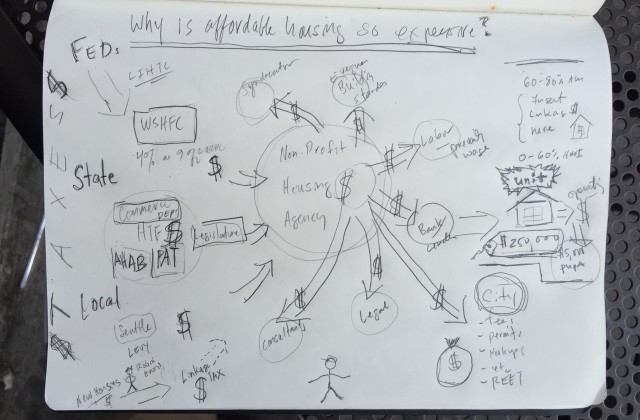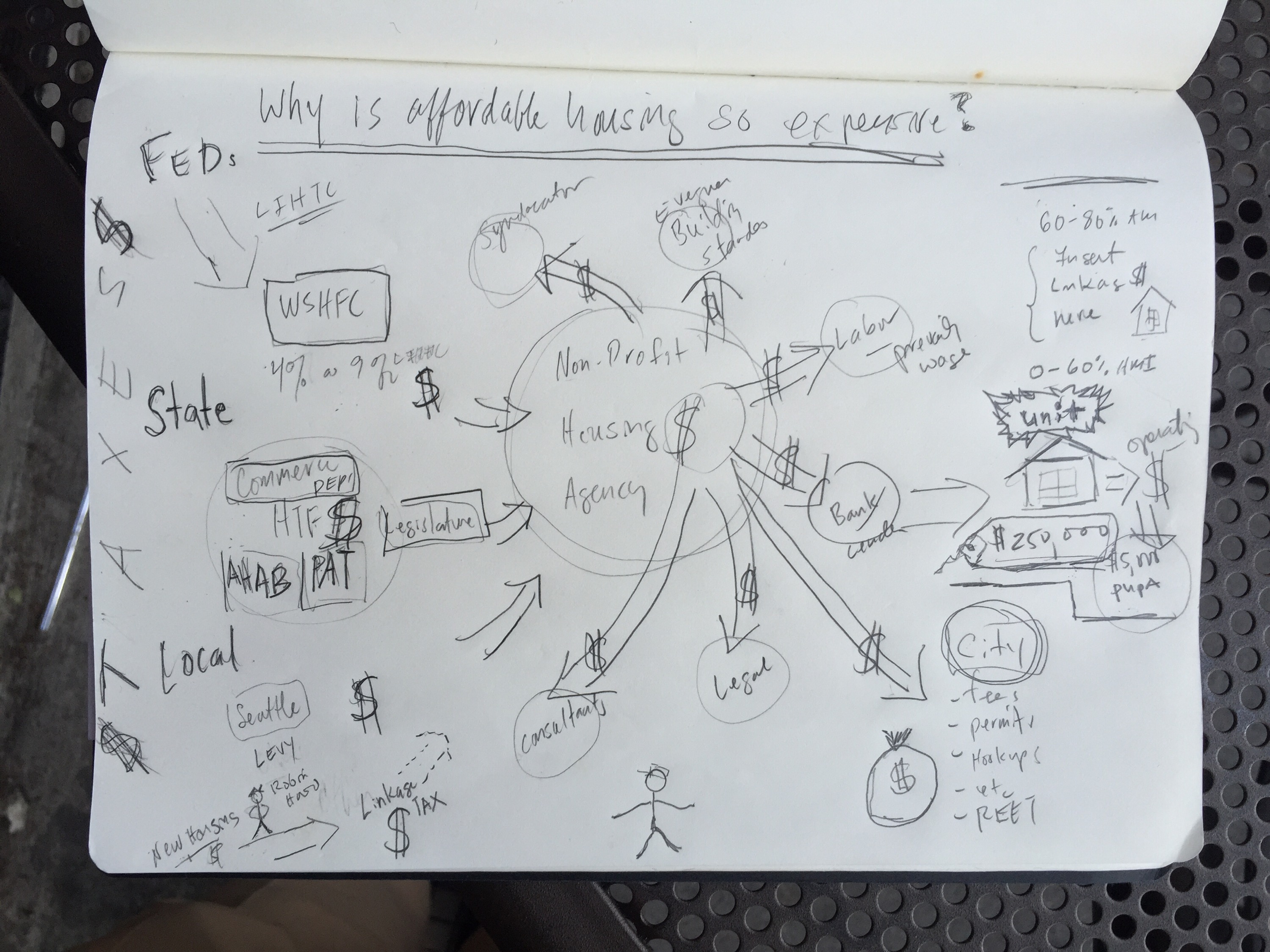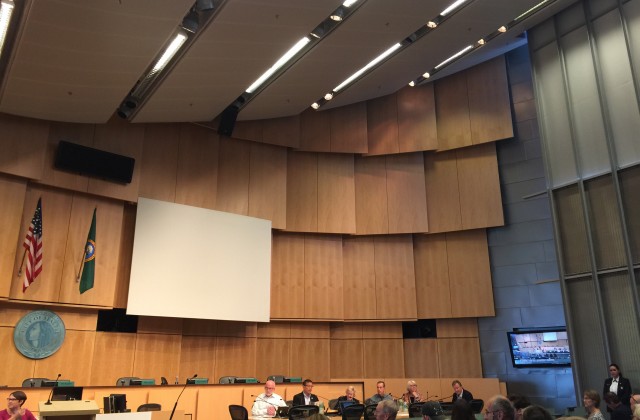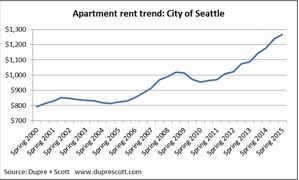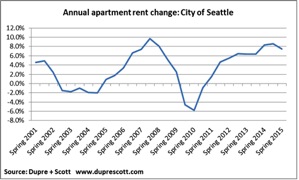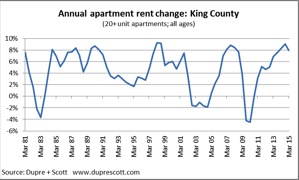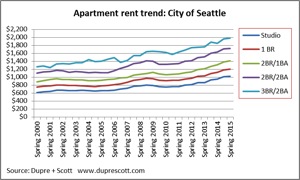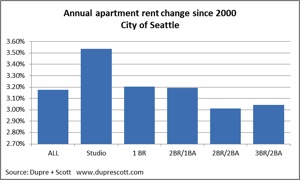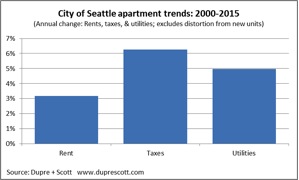Smart Growth Seattle on the Radio: Neighborhoods, Linkage, and Zoning
I was on the radio on Friday talking with Dave Ross. The story that was posted later captured what I said:
“I’m not advocating for no regulation,” Valdez said. “Health and safety, we should keep that stuff.”
“But if you can get a loan from the bank to build an 80- or 100-story tower for housing and there is enough demand for it, we should let that happen,” he said. “Our problem is that … we have this guy with a “New York Times” rolled up under his sleeve, and a latte, walking his dog, listening to NPR who feels like, ‘Well, it’s the rich guy’s problem. And somehow were are going to have to get him to take care of it.'”
Valdez endeavors to change that latte-drinking, dog-walker’s mind.
“We need to start updating our ideology and say, ‘Ya know, really, building more housing is a progressive, liberal, generous thing to do and if we make sacrifices for it. It is for the common good,'” he said. “It isn’t really about increasing profit for developers, it’s about lowering rents for the people that live here.”
I’ve been criticized before for advocating no land use regulation. That’s far from the truth. Regulations and rules are important for the business of building housing. Predictability is essential to taking risks. More predictability means less risk. But there comes a point when rules get in the way of a good thing, more housing. I’ve suggested Zero Based Zoning, the idea that we should be able to build whatever is needed to meet housing demand. It makes sense, especially as we prepare for more people moving into Seattle in coming years.
Why is Afforable Housing So Expensive
I used to be, for a short time and one project, a non-profit housing developer. While I did that job it validated everything I had written about development in general: regulation and limits on density make housing more expensive to build. The difference between my world then and a market rate developer is that a non-profit housing developer can’t raise rents to off set costs; those rents are fixed. The only place to go is more subsidy. A market rate developer can raise rents but only so high; the market can only bear so much rent.
But essentially, aside from the sources of funding the two–subsidized and market rate housing–are the same, right? Sort of. Affordable subsidized housing with tax credits and government funds is more expensive to build. Why? Because there are even more costs than those imposed by regulations and limits on production. Based on a study done a few years back by the Washington State Commerce Department,
Soft costs associated with project management, reserves, and fees, were S486,371 higher for the affordable housing project primarily due to higher operating reserves, permitting, and finance fees
And here’s a chart showing a comparison of costs in market rate and affordable projects.

Per unit housing costs vary widely, but there is broad agreement about the fact that subsidized housing is more expensive to build. But that doesn’t stop policy makers from wanting to take money away from market rate developers and give it to non-profit housing developers: I’ve called it the Robin Hood Syndrome, the idea that the only way to solve price problems is to raise taxes on market rate housing and give that money to affordable housing developers.
I’m working on a more visual representation of why this makes no sense aside from the fact that a linage tax will just make market rate housing more expensive, the very thing that sparks the urge to tax new housing in the first place. So I sketched out this drawing. It’s a first step, but based on the image I think we’re getting close to a more visceral representation of why we need to make all housing easier to build in Seattle, not more complicated and expensive by taxing it and using the money inefficiently.
Council Bargains Away Housing in Mixed Low-Rise Vote
The stage was set: Which Councilmembers would appear to support or oppose Councilmember Tom Rasmussen’s terrible amendments to already not-so-great low-rise legislation? By the time deliberations began on his 8 amendments, 7 Councilmembers were present a the Planning Land Use and Sustainability (PLUS) Committee. As we’ve pointed out, the legislation went from bad, to better, and would have been worse than what was originally proposed if Rasmussen’s amendments passed.
Our strategy was to turn out supporters of the underlying legislation to vote “no” in the PLUS Committee whether on the Committtee or not. The hope was Councilmembers favorable to the compromise legislation would vote “no” on every amendment. Only two Councilmemebers actually did that, Bagshaw and O’Brien.
Oddly, every other Councilmember voted “yes” on at least one amendment and “no” on at least one, except for Rasmussen who voted “yes” on every one. I’m still working to find out on the exact vote of each Councilmember — votes were by voice.
My theory is that Councilmembers wanted to vote “yes” on at least one of the amendments. This hedging means they can say to everyone involved, “I voted with you at least once!”
This is kind of good politics, although it’s the kind of pleasing behavior that got us here in the first place. Councilmembers acted as if they were throwing some red meat to the sharks hoping they’d be satisfied and go away. That’s never worked. Councilmember O’Brien has tried that before with previous legislation. It doesn’t work.
Here’s the quote I gave to a couple press outlets:
Today the PLUS Committee plus extra Councilmembers hedged its bets with neighborhood angst. The only right and good thing to do was vote down all the Rasmussen amendments. Instead, some Councilmembers made a bargain with angry neighbors, voting yes on some amendments. The problem is they are bargaining away a known good — more housing– for vague benefits like a neighbors view of the sky or a few feet of distance from a row house.
We still need to assess what all this might really mean and work to reverse the damage at full Council. But here’s a quick rundown of what passed and didn’t. (Updated: I am still trying to nail down who voted “yes” and “no” on some of these, but the three to watch are the ones that passed. We’ll be trying to reverse those amendments at full Council which is likely to vote on the whole of the legislation on July 6th)
Amendment 1: Application of floor area ratio (FAR) limits to exterior corridors
CB 118385 includes FAR provisions for exterior spaces in multifamily projects that are located in Lowrise (LR) zones. The legislation would exempt exterior corridors and stairways in such projects from FAR calculations if they meet the Seattle Building Code standard for an exterior corridor or egress balcony (effectively, if they are less than 50 percent enclosed). This amendment would count all exterior corridors and stairways toward the FAR limits for projects in LR zones, regardless of their level of enclosure.
Passed: Yes votes, Okamoto, Godden, Licata, Rasmussen; No votes, O’Brien, Bagshaw, Burgess
Amendment 2: Expansion of interior spaces subject to floor area ratio (FAR) calculations
This amendment would require all finished interior spaces with a floor-to-ceiling clearance of 36 inches or greater to be included in FAR calculations for projects in Lowrise (LR) zones. As a result, living spaces such as sleeping lofts that commonly feature a low floor-to-ceiling clearance would be counted toward applicable FAR limits.
Failed: Yes votes, Licata, Rasmussen, Godden; No votes, O’Brien, Bagshaw, Burgess, Okamoto
Amendment 3: Elimination of Passive House qualification for floor area ratio (FAR) increase
CB 118385 would add certification by the Passive House Institute U.S. to the list of green building performance standards that qualify development projects in Lowrise zones for a higher FAR limit. This amendment would remove Passive House certification from that list.
Failed: Yes votes, Licata, Rasmussen, Godden; No votes, O’Brien, Bagshaw, Burgess, Okamoto
Amendment 4: Elimination of floor area ratio (FAR) and height exemptions for partially-buried floors
Currently, a 4 foot height increase is available for apartment projects in Lowrise (LR) zones if the building includes a partially below-grade story. The area in the partially-buried floor is also generally exempted from FAR calculations. This amendment would eliminate the FAR and 4 foot height exemptions for partially below-grade floors in apartment projects in LR zones. For rowhouse and townhouse projects in LR zones that would still be eligible for the 4 foot height and FAR exemptions for partially-buried floors, the amendment would limit the number of stories that could be built above the partially-buried floor to three.
Failed: Yes votes, Rasmussen and Licata; No votes, O’Brien, Bagshaw, Burgess, Godden, and Okaomoto.
Amendment 5: Height limit for street-facing building facades
CB 118385 would establish minimum upper-level setback requirements in Lowrise (LR) zones that would apply from all street lot lines in addition to any required ground-level setbacks. For structures in LR zones that are subject to a 30 foot height limit, the upper-level setback requirement would be 12 feet above a height of 34 feet. For structures in LR zones that are subject to a 40 foot height limit, the upper-level setback requirement would be 16 feet above a height of 44 feet. Departures from setback standards may be permitted through the Design Review process.
This amendment would remove the upper-level setback requirements proposed in CB 118385 and instead establish a height limit for street-facing building facades. For structures in LR zones that are subject to a 30 foot height limit, the maximum height of the street-facing façade would be 34 feet within 12 feet of the street-facing property line. For structures in LR zones that are subject to a 40 foot height limit, the maximum height of the street-facing façade would be 44 feet within 12 feet of the street-facing property line. Departures from height regulations are not permitted under the City’s Design Review process.
Failed: Yes votes, Rasmussen, Godden; No votes, Licata, O’Brien, Burgess, Bagshaw, and Okamoto.
Amendment 6: Rounding thresholds for density limits
CB 118385 would establish a 0.85 rounding threshold (the current rounding threshold is 0.5) for density calculations for Lowrise 1 (LR1) zoned lots that measure less than 3,000 square feet in area. For such lots, if density calculations result in a fraction of a unit, any fraction up to and including 0.85 would be disregarded and any fraction over 0.85 would allow one additional unit. This amendment would apply the proposed 0.85 rounding threshold to all density calculations for Lowrise-zoned lots regardless of lot size.
Passed: Yes votes, Rasmussen, Burgess, Godden, and Licata; No votes, O’Brien, Bagshaw and Okamoto.
Amendment 7: Density limits for rowhouses in Lowrise 1 (LR1) zones
No density limit currently exists for rowhouse development in LR1 zones. CB 118385 would establish a density limit of one rowhouse per every 1,600 square feet of lot area on all LR1-zoned lots that measure less than 3,000 square feet in size. This amendment would extend the density limit of one rowhouse per every 1,600 square feet of lot area to all LR1-zoned lots that measure less than 5,000 square feet in size.
Failed: Yes votes, and Licata; No votes, Burgess, O’Brien, Bagshaw and Okamoto
Amendment 8: Side setback requirements for rowhouses
This amendment would establish a new, 3.5 foot side setback requirement for all rowhouse projects in Lowrise zones except those that share a side lot line with another rowhouse project (no side setback required) or a single-family zone (5 to 7 foot side setback required).
Passed: Yes votes, Rasmussen, Okamoto , Godden, and Licata; No votes, O’Brien, Bagshaw, and Burgess.
It’s possible the full City Council will change some of this. But for now a bad piece of legislation is worse than it was before, reducing housing supply and choice for no other reason than to make some angry neighbors a little less angry.
Mike Scott: Can You Handle The Truth About Apartment Rents?
The average apartment rent in Seattle rose 8.3% in the past year. That’s a lot. No doubt about it. It beats inflation. It beats wage growth. So some in the media and special interest groups take to calling this a problem of skyrocketing rents, a crisis, an emergency. Is it really? Let’s take a look.
First, let me say this about that. That type of hyperbole is misleading at best. And it is dishonest at worst.
Next, that 8.3% rent increase compares rents last year with rents this year. That’s fine, except for one thing. Developers opened a lot of new apartments in the past year. And new units have more features and rent for more. So it is really an apples-to-oranges comparison.
So you should exclude the new units to make an apples-to-apples comparison. We did that, and found rents rose 7.5%. That’s still a lot, but at least this correction makes the data more meaningful and more honest.
Next, we need to look at rent trends over time. And we will back out the distortion created by new construction. A snapshot does tell “a” story. But it does not tell “the” story, the whole story.
The average rent in Seattle in 2000 was $792. Over the past 15 years it has increased to $1,266. But you can see that over those 15 years rents rose faster in some years, slower in others, and even fell sometimes. Rents are impacted by a lot of things, like the economy and how much competition there is from new supply, to name just two.
Instead of looking at the rent dollars each year, let’s look at the change in rents every 12 months. You can see how cyclical rents are. And you can see that recent increases, while significant, are not unusual. And this roller coaster trend didn’t just suddenly appear 15 years ago.
Here’s a look back over almost 40 years. This is for all of King County and we didn’t filter out the distortion from new construction. Why not? Lazy I guess. We have quick access to this information on the county level. Breaking out Seattle would be pretty time consuming. Anyway, it is still useful. And it shows the same trend over and over and over again.
Getting back to Seattle, the overall rent trend we started this discussion with is similar for each unit type, from studios to 3 bedroom apartments.
The bottom line: Over the past 15 years rents rose just under 3.2% a year in Seattle. They rose a little more in studios and less in 2 and 3 bedroom apartments.
To put those increases in perspective, apartment investors saw real estate taxes increase 6.3% a year in the same period. And building utilities rose 5% a year. That’s important because those are the two biggest operating costs investors face. They account for 45% of total operating costs.
Don’t get us wrong. We do have a crisis. But it is not a crisis of skyrocketing rents. It is a crisis of skyrocketing hyperbole. It is a crisis of disinformation, which leads to bad decisions. How unfortunate for the entire community.
Let Council Know You’re Against Rasmussen Amendments to LR Legislation
There isn’t any simpler way to put it: Please let the City Council know you oppose Councilmember Rasmussen’s efforts to return currently low-rise legislation to the form it was in when we appealed it last year. Councilmember Rasmussen has 9 amendments before the Planning Land Use and Sustainability (PLUS) Committee tomorrow afternoon. We need your help now to keep this legislation from getting worse. Whether you have already contacted Councilmembers or not, they need to hear that there is support to keep what amounts to a compromise together. You can see all the amendments by following links in the Plus Committee Agenda. I’ve edited our e-mail petition page so it has the legislation referenced. You can get to the page by clicking on the link below. Please do this as soon as you can.
